Energy Shift
Visualized: The Evolution of Energy Employment (2022–2030P)
The following content is sponsored by the National Public Utilities Council

The Evolution of Energy Employment (2022–2030P)
According to the International Energy Agency (IEA), just over half of the 67 million people employed in the global energy industry in 2022 worked in the clean energy sector: 35 million vs. 32 million in fossil fuels. And with the clean energy transition picking up pace, that gap is set to widen.
In this graphic created in partnership with the National Public Utilities Council, we explore how global energy employment could change by 2030 in a current policy scenario, using projections from the IEA.
The Rise in Clean Energy Employment
The IEA’s current policy scenario is a conservative projection for progress in line with the present trajectory of our energy system. It doesn’t assume that nations will reach their announced goals or that net zero will be achieved by 2050.
Even within this conservative scenario, the global energy sector is projected to have a net gain of 5.7 million jobs by 2030. Except for the 300,000 jobs added in the oil and gas supply industry, these jobs are all in clean energy.
In a more ambitious scenario, aligned with achieving net zero by 2050, the net gain in jobs is projected to nearly triple to 17 million.
| Changes in global energy employment 2022–2030P, millions of jobs | Current policies scenario | Net-zero emissions 2050 scenario |
|---|---|---|
| Coal supply | -1.4 | -2.8 |
| Internal combustion engine vehicles | -1.1 | -6.2 |
| Unabated fossil fuel electricity | -0.2 | -1.2 |
| Critical minerals | +0.2 | +0.7 |
| Oil and gas supply | +0.3 | -2.5 |
| Low-emissions fuels | +0.4 | +3.2 |
| End-use efficiency | +1.2 | +3.2 |
| Energy grids and storage | +1.4 | +3.8 |
| Low-emission electricity | +1.7 | +11 |
| Electric vehicles and batteries | +3.2 | +7.7 |
| Net job creation | +5.7 | +16.9 |
In both scenarios, the global energy industry is poised to create millions of new jobs in the coming years, with the job gains in the clean energy sector significantly outweighing the job losses in the fossil fuel industry.
A People-Centred Transition
With projected growth of this magnitude, the IEA emphasizes that policymakers and industry must support employee transitions from fossil fuels and address skill gaps in emerging industries through education and training.
According to the World Energy Employment report, continued efforts in these areas are crucial to prevent labor shortages and avoid delays in the clean energy transition.
Learn how the National Public Utilities Council is working toward the future of sustainable electricity.
Energy Shift
All Commercially Available Long Duration Energy Storage Technologies, in One Chart
In this chart, we break down the parameters of LDES technologies that have commercial or pre-commercial readiness.
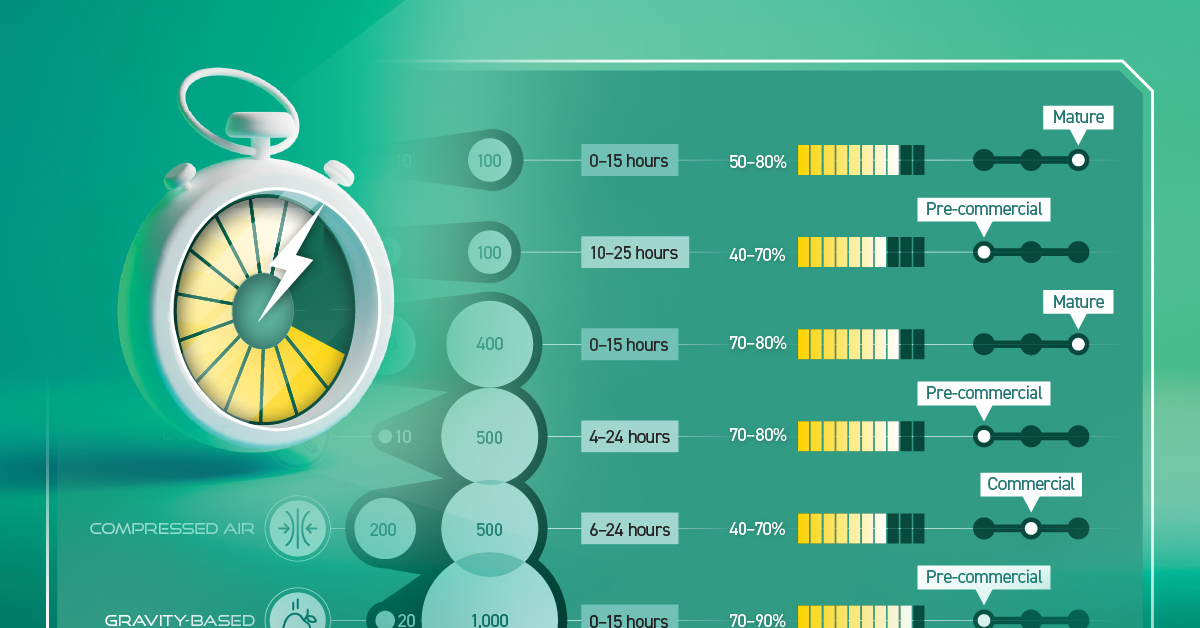
All Commercially Available Long Duration Energy Storage Technologies, in One Chart
Long duration energy storage (LDES) technologies can store electricity for 10+ hours, complementing intermittent renewables, boosting grid resiliency, and reducing fossil fuel dependency.
Created in partnership with the National Public Utilities Council, this chart lists the characteristics of LDES technologies that have commercial or pre-commercial readiness, using data from the LDES Council’s Net-Zero Power report and 2023 deployment update.
The Four Primary Types of LDES
Before getting into the details, let’s cover the four primary types of LDES.
- Mechanical: Stores potential energy (by tension or position)
- Thermal: Stores energy as heat
- Chemical: Stores energy found within chemical bonds
- Electrochemical (batteries): Stores energy of chemical reactions, where electrical energy is converted to chemical energy and vice versa
Currently, mechanical storage systems are the most common around the world. Aboveground pumped hydropower, for instance, currently accounts for 96% of all utility-scale energy storage in the United States.
How Do LDES Technologies Measure Up?
Below, we list the storage capacity, storage duration, and average round-trip efficiency (RTE) of LDES technologies that have commercial or pre-commercial readiness on a global scale.
For context, RTE measures the effectiveness of a storage system by measuring the ratio of energy output to energy input during a full charge-discharge cycle. Or briefly, the higher the RTE, the lower the losses and therefore higher the efficiency.
| Form of Energy Storage | LDES Technology | Storage Capacity (MW) | Nominal Duration (Hours) | Average Round-Trip Efficiency |
|---|---|---|---|---|
| Mechanical | Underground pumped hydro | 10–100 | 0–15 | 50–80% |
| Mechanical | Liquid air | 50–100 | 10–25 | 40–70% |
| Mechanical | Aboveground pumped hydro | 200–400 | 0–15 | 70–80% |
| Mechanical | Liquid CO2 | 10–500 | 4–24 | 70–80% |
| Mechanical | Compressed air | 200–500 | 6–24 | 40–70% |
| Mechanical | Gravity-based | 20–1,000 | 0–15 | 70–90% |
| Thermal | Sensible heat | 10–500 | 200 | 55–90% |
| Chemical | Power-to-gas-to-power | 10–100 | 500–1,000 | 40–70% |
| Electrochemical | Aqueous electrolyte flow battery | 10–100 | 25–100 | 50–80% |
| Electrochemical | Metal anode battery | 10–100 | 50–200 | 40–70% |
| Electrochemical | Hybrid flow battery (with liquid electrolyte and metal anode) | >100 | 8–50 | 55–75% |
The table above shows that a mechanical, gravity-based LDES system can provide the highest storage capacity while presenting an impressive 70–90% average RTE.
On the other hand, a chemical power-to-gas-to-power system, which typically converts electricity to hydrogen gas and back to electricity, provides the highest storage duration of up to 1,000 hours.
With that said, there are different storage needs and siting considerations across electrical grids. Given the diverse range of options available, suitable solutions can be found to complement renewables and aid decarbonization.
Learn how the National Public Utilities Council is working toward the future of sustainable electricity.
Energy Shift
2024 U.S. Clean Electricity Outlook
In this graphic, we explore the projected generation capacity of different clean electricity technologies in the U.S. for 2023 and 2024.

2024 U.S. Clean Electricity Outlook
As the world urgently seeks sustainable energy solutions, the U.S. has the opportunity to lead the charge in the shift toward clean electricity.
But what kind of progress can the country expect in the upcoming year?
To find out, we partnered with the National Public Utilities Council to visualize the projected 2024 electricity generation capacity of clean energy technologies in the U.S., using data from the U.S. Energy Information Administration (EIA).
The Rise of Battery Storage and Solar Power
Looking ahead to 2024, U.S. generation capacity projections unveil a promising trajectory for battery storage and solar power. Battery storage is projected to grow by 82% compared to 2023 estimates, while solar is projected to grow by 40%.
Wind power is also growing, albeit at a slower rate (5%) due to higher costs and permitting challenges, especially for offshore projects.
| Electricity Generation Capacity Projections | 2023 | 2024 | Change |
|---|---|---|---|
| Battery Storage | 17 GW | 31 GW | +82% |
| Solar | 93 GW | 130 GW | +40% |
| Wind | 149 GW | 156 GW | +5% |
| Nuclear | 96 GW | 97 GW | +1% |
| Geothermal | 3 GW | 3 GW | 0% |
| Hydro | 80 GW | 80 GW | 0% |
As illustrated in the table above, the EIA projects a modest year for the rest of the major clean electricity sources in the nation, with nuclear expected to eke out a lackluster 1% growth, while hydro and geothermal remain unchanged.
Overall, these projections underscore a diversification of the U.S. energy portfolio, with a pronounced emphasis on renewables and energy storage. The growth in battery storage capacity, specifically, underscores efforts to overcome the intermittency challenges of renewables, ultimately ensuring a reliable and emission-free power supply in the country.
The Broader U.S. Power Sector in 2024
Beyond capacity projections, let’s also take a look at some projected trends related to the broader U.S. power sector in 2024.
- U.S. daily electricity generation is projected to grow by 3% between 2023 and 2024, reflecting an increasing demand for power in the country.
- Renewables are set to claim an even larger slice of the U.S. electricity mix in 2024, rising from 22% in 2023 to 24%.
- Electricity production from coal is projected to decline by 9% as the country continues its move away from this emission-intensive energy source.
- Despite the country’s projected growth in clean electricity capacity, total U.S. energy-related emissions are projected to drop by 0.1% in 2024.
All in all, the 2024 landscape of the U.S. power sector signifies progress with increased renewables and heightened electricity generation. However, the marginal dip in emissions emphasizes the need to ramp-up country-wide efforts to meet the goal of a net-zero future.
Learn how the National Public Utilities Council is working toward the future of sustainable electricity.
-
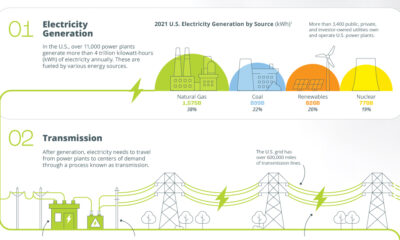
 Electrification1 year ago
Electrification1 year agoVisualized: How the Power Grid Works
-
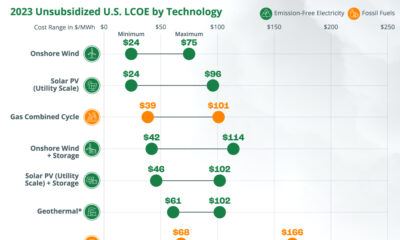
 Energy Shift9 months ago
Energy Shift9 months agoRanked: The Cheapest Sources of Electricity in the U.S.
-
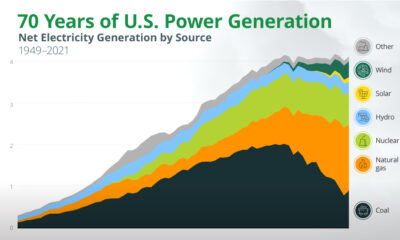
 Energy Shift1 year ago
Energy Shift1 year agoAnimated: 70 Years of U.S. Electricity Generation by Source
-

 Clean Energy1 year ago
Clean Energy1 year agoBreaking Down Clean Energy Funding in the Inflation Reduction Act
-
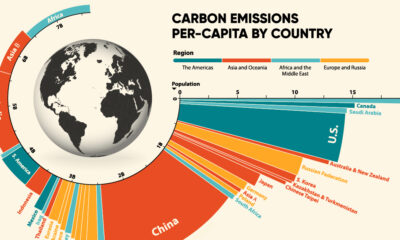
 Emissions1 year ago
Emissions1 year agoVisualizing Global Per Capita CO2 Emissions
-
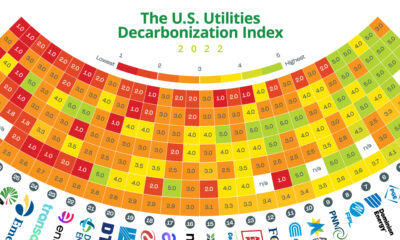
 Decarbonization1 year ago
Decarbonization1 year agoThe U.S. Utilities Decarbonization Index
-
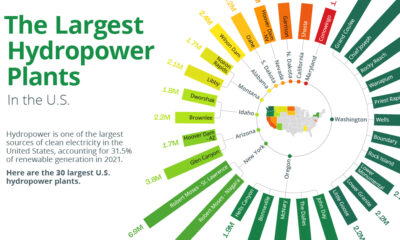
 Clean Energy1 year ago
Clean Energy1 year agoThe 30 Largest U.S. Hydropower Plants
-

 Clean Energy7 months ago
Clean Energy7 months agoBreaking Down the $110 Trillion Cost of the Clean Energy Transition

